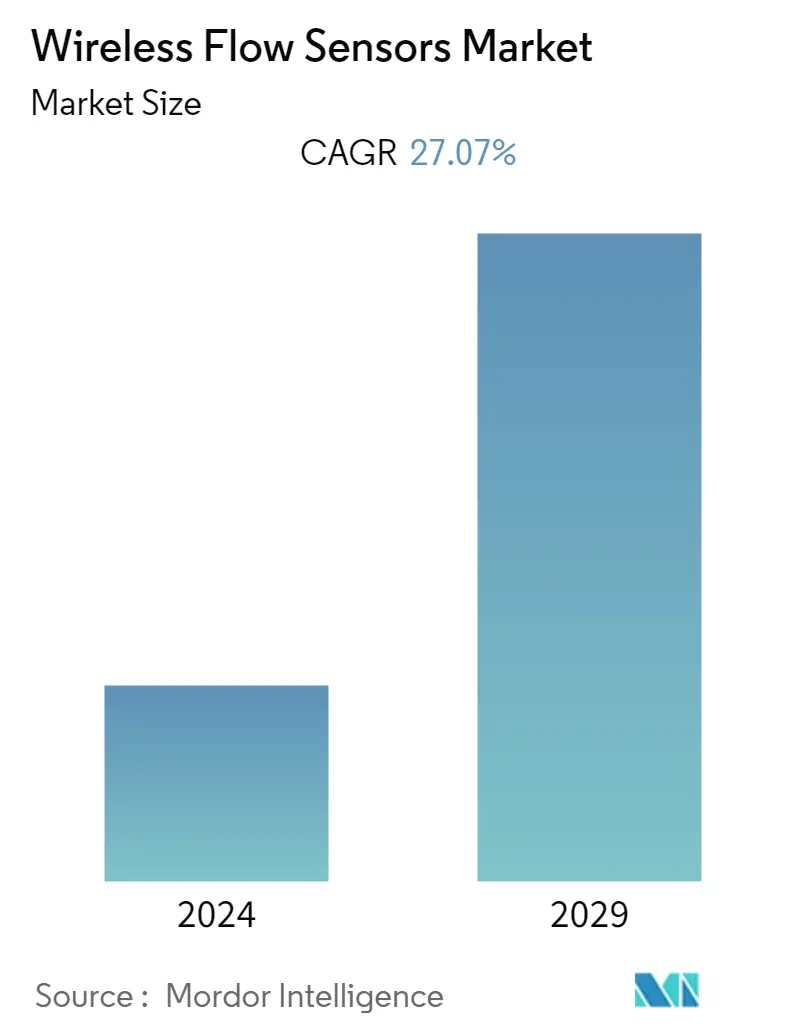Market Size of Wireless Flow Sensors Industry

| Study Period | 2019 - 2029 |
| Base Year For Estimation | 2023 |
| CAGR | 27.07 % |
| Fastest Growing Market | Asia Pacific |
| Largest Market | North America |
| Market Concentration | Low |
Major Players
*Disclaimer: Major Players sorted in no particular order |
Need a report that reflects how COVID-19 has impacted this market and its growth?
Wireless Flow Sensors Market Analysis
The wireless flow sensors market is expected to register a CAGR of 27.07% over the forecast period. With a lot of innovation and modern technologies such as Coriolis, ultrasonic, magnetic, and vortex flow sensors are a significant competition to traditional measurement technologies. These advanced technologies have also witnessed competition among themselves. Each technique has pros and cons that suit a specific application.
- The revival of the oil and gas industry and the expanding infrastructure in the water and wastewater industry are likely to drive growth in the medium to long term. Growth opportunities are opening in developing economies, such as China and India, that have developed their oil, gas, and chemical industries.
- The increasing quest for new energy sources, renewable energy development, government regulations, and rapid technological advancements are the key drivers making the wireless flow sensors market grow with a boom. The demand for wireless flow sensors is increasing significantly as it saves time, materials, and labor. With modern microelectronics, flowmeters offer many communication options.
- Flow sensors can detect leaks, blockages, pipe bursts, and changes in liquid concentration due to contamination or pollution. Ultrasonic flow sensors are the most popular type of non-contact flow sensor. Ultrasonic flow sensors send high-frequency sound pulses across the flowing liquid or gas medium. These sensors measure the time between the emission of the sound and its contact with the sensor's receiver to determine the flow rate of the gas or liquid.
- Increasing advancements, such as incorporating new protocols to ease the connection to enterprise networks, are further boosting market growth. For instance, a flow sensor can have an Open Platform Communication - Unified Architecture (OPC-UA) server application package built into the flowmeter, allowing the device to communicate with an OPC-UA client and be integrated into Industrial Internet of Things (IIoT) applications. This is accomplished through networking the flowmeter via either LAN or WLAN, which allows the DCS or PLC to be dedicated to the control function. In contrast, this additional communication path can be devoted to diagnostic, monitoring, and reporting purposes.
- The COVID-19 pandemic positively impacted the wireless flow sensors market. According to the World Health Organization (WHO), the water supply had to be kept safe, owing to the chances of virus transmission that could quickly grow through sewage. This factor drove the adoption of biological wastewater treatment systems and propelled the growth of the wireless flow sensors market during the pandemic. Government bodies and non-profit organizations created awareness about water safety and security during the pandemic.
